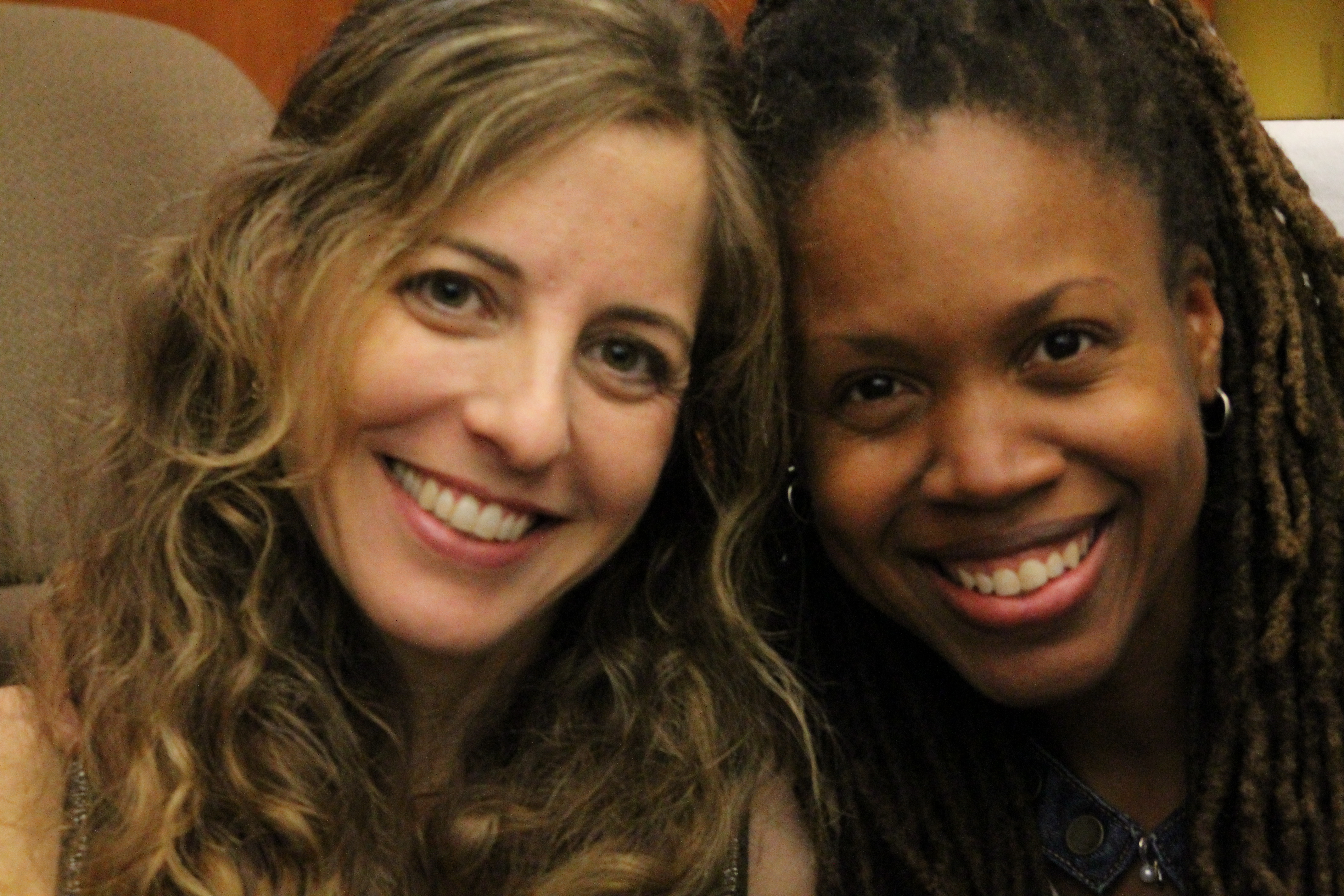Note: Natalie Bullock Brown, childhood friend of the author, also wrote a companion reflection that can be found online here.
As the 50th anniversary celebration of the "I Have a Dream" speech approached, I seemed doomed not to be able to acknowledge it as fully as I would have liked. I had fond memories of busing from Chicago to scorching hot Washington, D.C. with my mother to participate in the 20th anniversary celebration as a 14-year-old girl. This time, the celebration's end-of-the-summer timing felt inconvenient to me as a parent. There was confusion surrounding the multiple events scheduled within that week, and the celebration was competing with multiple current social justice battles occupying my attention at work.
Everything changed when my school friend Natalie Bullock Brown told me that she was coming from North Carolina for the celebration with her two young kids. She accepted my invitation to stay at our house.
Natalie and I met in 5th grade in 1979, when I transferred from public school to Francis W. Parker, a progressive and predominantly white private school located on the north side of Chicago. We were school buddies all the way through senior year, sometimes going home together to my house (hers was on the south side) to make our now infamous macaroni and cheese or ramen noodles feasts. But once we hit college, we lost touch completely until we reunited at our 25th high school reunion just last year and subsequently became Facebook friends. As regular contributors, supplemented by our personal messages to each other, Natalie and I quickly reconnected.
Natalie was one of five African-American kids in our graduating class of 67. While our school was careful to teach about race issues even as early as Ricky Locke's seventh grade social studies class, we spent little time acknowledging the difference in the color of our own skins, or discussing what those differences meant. For me, as I imagine for many of my white peers, this non-acknowledgment, combined with Parker's admirable commitment to making all students feel equal in all ways, resulted in an unintended artificiality -- the appearance that race issues no longer existed except in other parts of the country, far-away places, and in the past. This was a product of our time. We children of parents who lived through, or were involved in, the civil rights era were brought up so forcefully to believe in our "sameness" that it came as a surprise to many of us just how different we actually are too.
I will never forget my shock upon registering this reality in the dining hall my freshman year at Harvard. I had done the "Freshman Urban Program" the week before school started, where Regina and I had become friends. But in the Harvard dining hall, a majority of the freshman blacks ate at certain tables, and freshman whites at others. After joining Regina a few times at her table, I felt uncomfortable and gave in to sitting at the white tables. I have yet to meet a fellow Generation Xer who did not experience similar divisions at college. A quick scan of Natalie's and my Facebook friends confirms this reality continues past those years. I am currently working at an almost entirely white Jewish organization; Natalie teaches at a black college. I belong to an all-white Jewish synagogue; Natalie belongs to an all-black evangelical Christian church.
In the maturity of our age and life experience, this time when Natalie and I came together, we were both acutely conscious of our racial differences. What made the Martin Luther King Jr. celebration so special for me was that it marked the first time that we were both simultaneously aware of -- and even encouraged by the celebration to be cognizant of -- the differences in the colors of our skin. At the same time, we were experiencing and living our commonalities. Here was my childhood friend with her children, meeting my children. There we all were, sweltering in the heat together, making up chants about wanting to enter the festivities with the racially diverse crowd. The disorganization of the event prevented us from ever going in, and we ultimately sat in my office conference room with some of my co-workers, moved and inspired together by the incredible cast of speakers on TV. In this moment, I felt so alive -- more conscious than ever of our shared feelings of reverence for Dr. King and what he stood for and more aware than ever of the beautiful different shades of skin around the table.
Something magical happened in that short day-and-a-half. I felt so sad to watch Natalie, E.J. and Mimi drive away. Natalie left me a message the next day asking my 12-year-old, Xander, to call her 10-year-old son E.J. because E.J. had nearly cried upon viewing Xander's photo (he already missed him so much). I think I understood what E.J. was feeling. My hope is that in the future, all of our children can have these moments of truth, wherein they experience their differences and sameness all in the same moment. That must have been what Dr. King really meant when he said: "I have a dream that one day little black boys and girls will be holding hands with little white boys and girls."
